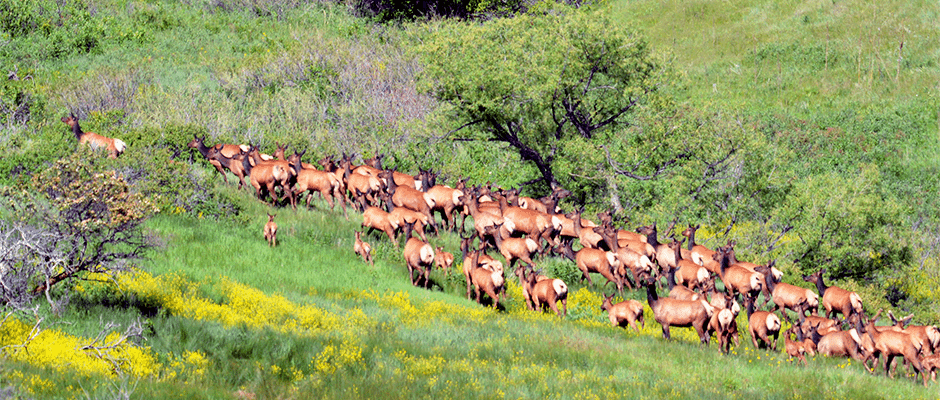Share this article
JWM: Habitat quality drives elk recruitment
While biologists have often studied individual elk (Cervus canadensis) herds, a team of researchers recently wanted to get a bigger picture of elk throughout the West.
“This bigger study allowed us to tease out patterns you might not otherwise see and tells a complex story,” said Michael Mitchell, the leader of the Montana Cooperative Wildlife Research Unit at the University of Montana and the second author of the study published in the Journal of Wildlife Management.
The researchers found that even more than predators, the quality of the habitat was a key factor in calf recruitment. Lower vegetation productivity was tied to lower calf recruitment.
“Elk are a flagship species for a lot of western states, and their management ecology is of high importance,” Mitchell said. “There’s been a concern for quite a while on whether these populations are doing well.”
While a number of studies looked at herds in individual states, “we thought it might be a good idea to look across herds from a regional perspective,” he said.
The team looked at the effects of different factors such as weather, vegetation productivity and predators on elk in Washington, Idaho, Montana, Oregon, Wyoming, Utah and Colorado.
The team conducted a meta-analysis in which they compiled data on elk herds from the seven different states. Some of the date included satellite data depicting vegetation productivity across elk herd sites. They also looked at weather and richness of predator communities where populations of wolves (Canis lupus) and grizzly bears (Ursus arctos) have recovered.
“The results were complex,” Mitchell said. “That’s the cool thing and challenging thing about this study.”
Overall, they found a broad-scale decrease in elk recruitment from 1989 to 2010.
The states contained three different ecotypes. In the southern areas, with no grizzly bears or wolves, they found vegetation productivity in winter ranges was the most important factor for recruitment of elk calves. In northern areas, where grizzly bears and wolves are present, productivity of summer habitat was more important. They also found weather on the summer range and winter range also had a small but measurable influence on elk calf recruitment.
The presence of large carnivores also increased predation and impacted elk recruitment. Wolves decreased elk calves by approximately five juveniles per 100 adult females, and grizzlies decreased calves by about seven per 100 adult females.
“The effect of adding carnivore species was relatively small compared to the effects of habitat change,” Mitchell said. “What appears to really be driving elk calf recruitment across all areas is variation habitat quality.”
Mitchell and his colleagues suggest managing forests to benefit elk by using fire or other means to create early successional forests.
TWS members can log into Your Membership to read this paper in the Journal of Wildlife Management. Go to Publications and then Journal of Wildlife Management.
Header Image: Elk travel through Rocky Flats National Wildlife Refuge in Colorado. Researchers found vegetation productivity is a prime factor in elk calf recruitment in the western United States. ©Ryan Moehring/USFWS








